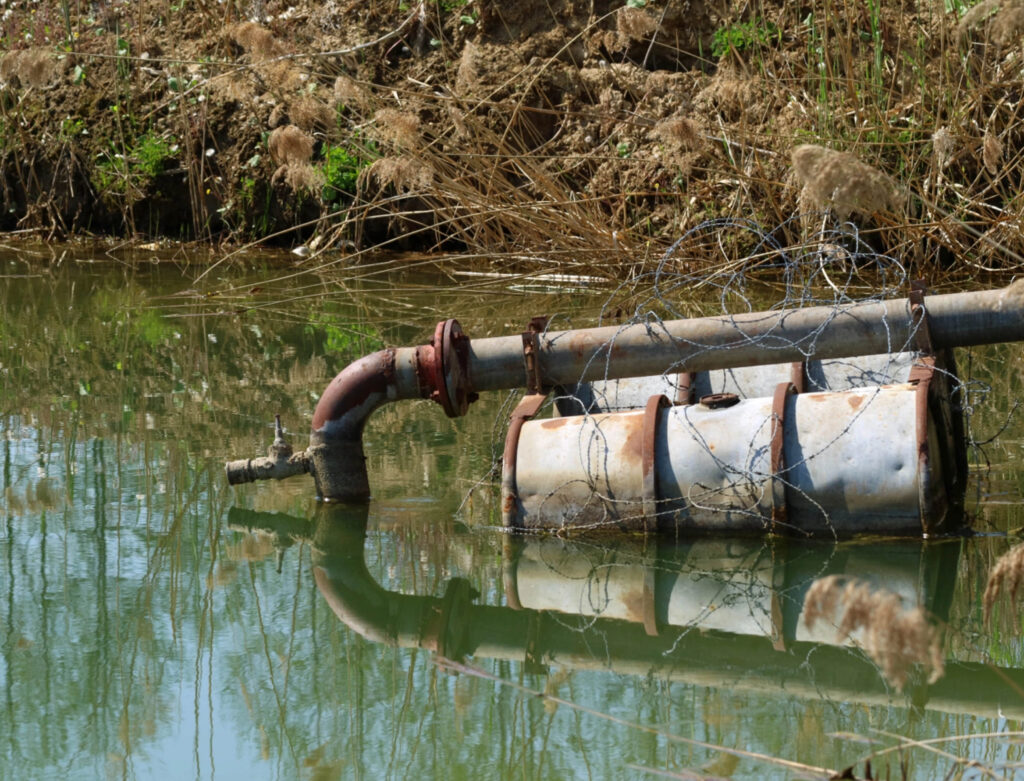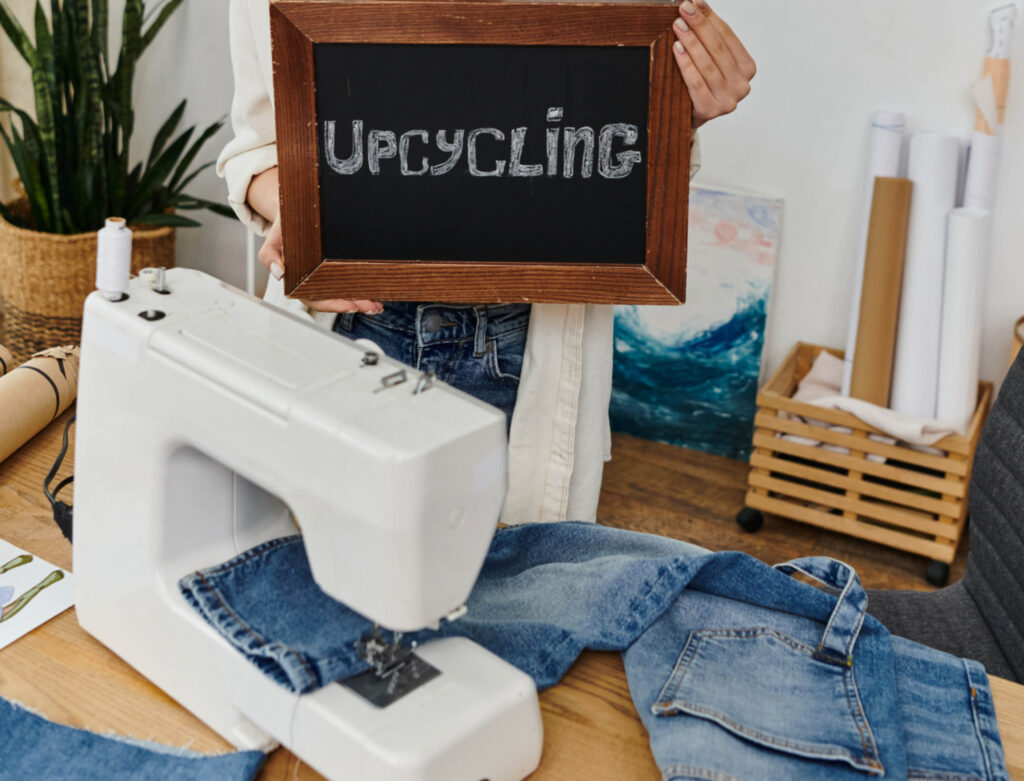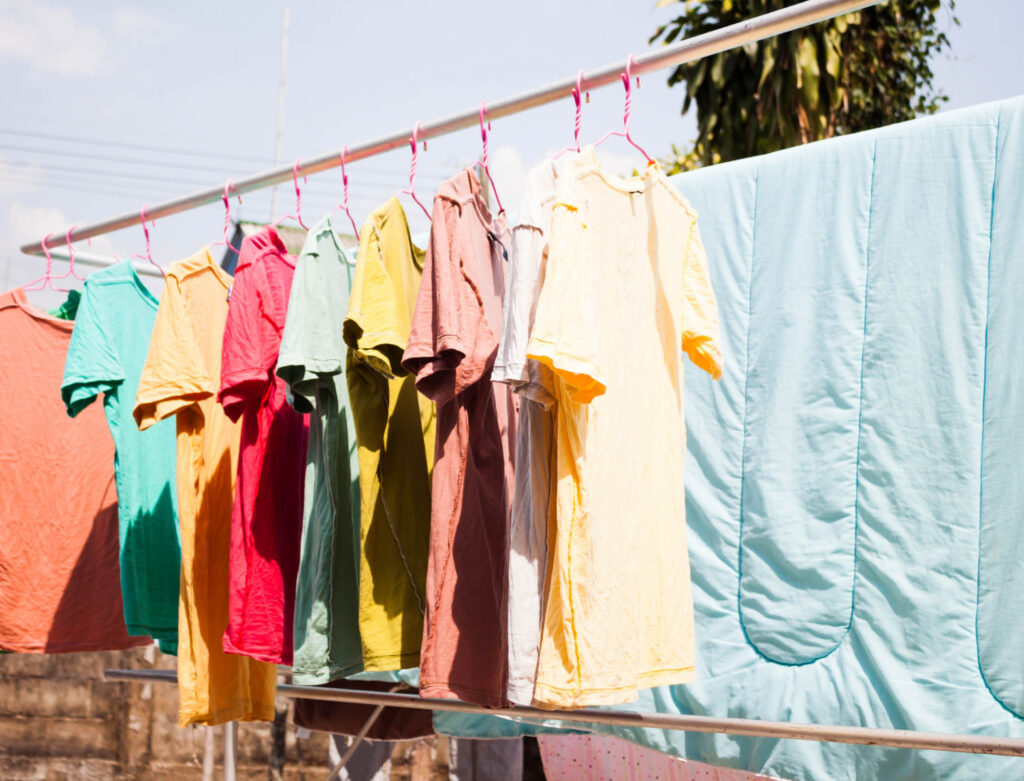Fight Fast Fashion – 7 Ways to Slow Your Style
According to our research, the average American brings between 53 and 68 new articles of clothing into their home every year. That’s approximately four to six items per month or more than one a week! Clearly, this excessive consumption is neither necessary, essential, nor sustainable. But we’re not here to judge, so before you get down on yourself, we’ll explore how this happened and what we can do about it. Let’s fight fast fashion together.
jump to:
The Problems with Fast Fashion
Identifying Fast Fashion Brands
Finding Sustainable Clothing Options
How You Can Fight Fast Fashion
What is Fast Fashion?
When I was in high school in the late 90s, the trends were all over the place. Bell bottoms were back from the 70s, but punk and grunge were still kicking around, too. I was never a teenager who cared about owning or wearing what was in style. Still, it’s much more difficult to escape the influence today. Every single social media platform is rife with advertisements and influencers touting the most recent trends and spouting fashion no-nos. And because we are paying attention, so are the brands.
Brands like Shein, H&M, and Forever 21 are responding to our urgent demand to have what society is telling us is cool. Enter fast fashion – these brands are creating and releasing new designs to match current trends at rates that may cause whiplash. And we’re eating it up. In order to keep up with time and competition, these non-stop fashion articles are made quickly and cheaply. This means they are designed to be worn a few times before they are either falling apart or replaced with the latest look.

Why We Need to Fight Fast Fashion & Embrace the Slow Fashion Movement
Environmental Issues created by fast fashion
The impacts of fast fashion on the natural environment cannot be counted on one hand (or even two!) Here are some of the most significant environmental concerns with the fast fashion industry.
- Astronomical amounts of waste: because this clothing is over-produced and designed to be replaced quickly, much of it ends up in the landfill – sometimes without ever being sold. In 2018 alone, more than 11.3 million tons of clothing and textiles were thrown away. Much of this clothing waste is also shipped to developing nations to become mountains of garbage, such as the one in Chile’s Atacama Desert. Those that don’t make it all the way to the landfill are incinerated, releasing copious amounts of harmful emissions into the air.
- Harmful materials: the fabrics that fast fashion brands use are typically made from fossil fuels like polyester, nylon, and spandex. These fabrics also shed microplastics when washed, which enter into our waterways and have now been found in every part of our bodies and even the clouds! In addition to this, these materials used by fast fashion brands don’t break down easily and can stick around for up to 200 years. To top it off, these items arrive at your doorstep wrapped in fast fashion packaging made of plastics and other materials that don’t biodegrade.
- Toxic dyes and other chemicals: those brilliantly colored clothing items are more than likely created using dyes loaded with hazardous chemicals. Because these brands manufacture in countries without strict regulations, the enormous amounts of water used to create this clothing become saturated with these toxins before being released into our waterways untreated. Another shocking revelation is that many of the articles made by these brands contain harmful chemicals within the fabric itself. A Martketplace investigation found that one in five items from fast fashion brands had elevated levels of chemicals — including lead, PFAS, and phthalates. During wear, these chemicals can be absorbed into our bodies. After disposal, they leach into the ground and water while the textiles break down.
- Manufacturing and transportation emissions: the energy required to create and ship all of these items is epic in proportions. The fashion industry is said to be responsible for as much as 10% of global carbon dioxide emissions, which is approximately four times the emissions that come from air travel!

ethical and social impacts of Fast fashion
If the environmental issues alone weren’t enough, here are some of the problems fast fashion poses to social sustainability.
- Unfair treatment and pay: according to a report by Oxfam, 99 and 100 percent of workers in Vietnam and Bangladesh, respectively, earned below a living wage in 2019. Not only do fast fashion brands take advantage of sourcing cheap labor in developing nations, but the majority of these workers are forced to work tireless hours to make enough money to feed their families. They are not given adequate breaks, health benefits, holidays, or anything else we would expect from an employer in our own life.
- Unsafe working conditions: in addition to the point above, the infrastructure of most facilities in the countries where these clothes are made would be deemed dangerous by a more developed nation’s standards. Remember those harmful chemicals and toxic dyes mentioned earlier? The people working in these factories handle these on a daily basis, often without any protection. Just in less than three years, since January 2019, there have been 117 incidents causing 245 deaths in the garment industry.
- Environmental racism and sexism: it’s easy for us to ignore the ecological effects fast fashion is causing when they are tucked safely away on the other side of the planet. By manufacturing these products in countries populated by racial and ethnic minority groups, we profit while releasing the burden on them. The majority of workers are women, and many are at risk of sexual assault due to their fear of losing employment. A reported one in four Bangladeshi female factory workers reported being abused in some way.
Identifying Fast Fashion & Sustainable Fashion

how to Avoid fast fashion brands
There are many indicators one can look for when attempting to identify a fast fashion brand. Take a look at an article of their clothing or a brand’s website and keep an eye open for the red flags on this list:
- Inventory: Fast fashion brands will usually have hundreds of different clothing items that change often. This is not how sustainable clothing is made.
- Sales: Because they over-produce and need to move on to the next trend, non-stop fashion brands often have clearance sales to make room for new inventory.
- Materials: Fabrics made from fossil fuels, such as polyester, nylon, spandex, lycra, and acrylic, are cheap and, therefore, harmful to the environment.
- (Unethical) Manufacturing: This is not a hard and fast rule, but if their clothing is made in Bangladesh, Vietnam, India, Indonesia, Cambodia, or China, this may indicate an unethical clothing brand.
- Prices: Because their materials are so cheap and they exploit the laborers making their clothing, fast fashion brands can offer incredibly low pricing. Resist the impulse buy that seems too good to be true—because it is.
- Lack of certification: You certainly won’t find any fast-fashion organizations with sustainability certifications like OEKO-TEX, GOTS, or Organic Cotton Certified.
- Learn to spot greenwashing: If you notice terms being used like “green, all-natural, or eco-friendly” without any substantive evidence to back it up, move along.
Some fast-fashion brands to avoid are Shein, Zara, Boohoo, H&M, Forever 21, Uniqlo, Mango, ASOS, Cider, Revolve, and Nasty Gal. For a more complete list of fast-fashion brands with dirty details, check out this article.
finding an eco-friendly and ethical clothing brand

From a transparent supply chain to ethical sourcing and renewable materials, environmentally friendly and socially responsible fashion brands try to consider it all. No one is perfect, and the same goes for brands aiming for sustainability. When investigating whether or not a brand meets the bill, here are some characteristics to look out for:
- Made-to-order: A brand that practices a made-to-order model is conscious of waste and overproduction, and we like that!
- Fewer, more versatile items: Typically, an eco-conscious brand will create timeless articles that can be worn in multiple ways for many different occasions.
- Materials: Look for recycled or upcycled fabrics and materials, such as sustainably sourced bamboo, Tencel, Lyocell, organic cotton, Modal, linen, recycled denim, and hemp.
- Ethical manufacturing: Locally made clothing would likely indicate fair wages and treatment for workers. Sustainability certifications like B Corporation, Fair Trade, Green Business Benchmark, or Cradle to Cradle also consider social sustainability and point towards fair trade fashion.
- Renewable energy sources: Brands serious about sustainability will already use or be genuinely working towards using renewable energy sources to manufacture their products. With so many green energy alternatives available, such as rooftop solar, hydroelectricity, or wind power, there is no longer an excuse for fossil fuel use.
- *Prices: Yes, sustainable, slow fashion is more expensive. But when you consider quality over quantity, 30 three-dollar shirts cost the same as 10 thirty-dollar shirts, don’t they? Look at long-lasting, quality clothing as an investment—for you and the environment.
- Circularity: Does the brand offer a repair service, return-at-end-of-life program, or resale platform for its items? If so, it is creating a space for its products to become something new or to be passed on to someone else rather than going to the landfill.
- Packaging: If you’re shopping online, fashion brands with sustainable packaging will be proud to tell you very clearly what they’ll be shipping your order in.
*If you want to make sustainable choices and start leading a more eco-friendly lifestyle AND save money, check out our article “How To Shop Sustainably on a Budget.” Sustainable fashion CAN be affordable!

How to Fight Fast Fashion & Practice Conscious Consumerism
If we want to battle fast fashion and adopt slow and green fashion practices, we’re in luck! There are many ways to avoid fast fashion and to support fast fashion alternatives. Here are seven sustainable ways you can fight fast fashion at home.
1) Practice responsible consumption to fight fast fashion
The best and “easiest” way to combat fast fashion is to resist the urge to splurge. I know, easier said than done. But as someone who has bought about five new articles of clothing in the last year, I promise you it is freeing. Not spending time deciding what to wear and changing four times before going out has improved my life in more ways than one. Practicing minimalist fashion and having a capsule wardrobe in your closet made up of practical clothing should be your first stop in fighting fast fashion.

2) secondhand shopping – sustainable fashion for less
Do you love to shop till you drop and want to wean yourself off slowly? Why not replace the online clothing stores you should stay away from with the community thrift shop? No one said you can’t buy from fast fashion brands! If you love the designs from Urban Outfitters or Boohoo, then why not buy them secondhand? There are so many ways to thrift shop today it’s almost overwhelming. From Facebook marketplace to Poshmark and the actual, physical secondhand store, it’s never been easier. Light on the wallet and saving items from ending up in the landfill – win-win!
3) repair rather than replace
Another way to practice eco-friendly fashion is to mend any rips or tears that may occur to your clothing. Too often, we toss an item when it becomes damaged before considering how we might repair it. For simple snags, a few stitches might do; for something more significant, you should try the visible mending trend. Check out this article to learn some basic mending techniques.

4) fight fast fashion by upcycling your clothing
Have something damaged beyond repair? Why not upcycle it into something new? Recycling your clothing can even help you be more sustainable in other areas of your home! You could cut an item into squares to use as cleaning cloths to replace paper towels. An old tee could be turned into t-shirt yarn for other crafts or made into a throw pillow cover. Turn a pair of jeans into a tote bag or transform them into a skirt. A quick search online or on Pinterest will give you a plethora of ideas for any clothing item!
5) share or rent clothing to battle fast fashion
As a teenager, I remember sharing clothing with my friends all the time! If I coveted a friend’s top, I could simply borrow it rather than buy one for myself. And when that friend grew tired of the top? Well, she gave it to me, of course! Need something special for an event, like an evening gown, tuxedo, or costume? Why not consider renting rather than buying an article that will only be used once and likely stored in the back of your closet forever?

6) Make Mindful fashion choices
When it comes time for something brand new, practicing eco-friendly and ethical consumerism is key. Battle fast fashion by focusing on supporting brands that are not fast fashion and that create sustainable and ethical clothing. Non-fast fashion brands will have a transparent supply chain and prioritize ethical sourcing and manufacturing and renewable materials. Use the list above to help you identify sustainable clothing brands.
If you’re genuinely in need of some new clothing & more, check out some of the fast fashion alternatives we’ve curated for you in our Brands Directory.

7) wash your clothes properly & less often
The more frequently or incorrectly we wash our clothing, the faster the materials will wear out. Follow the instructions on the label to ensure your item doesn’t shrink or lose its shape and that it can last for the duration it was meant for. Washing less often can also help extend the lifetime of your clothing. Now, we’re not suggesting that you wear a soiled or stinky outfit! But there are some ways to ensure you decrease the amount of laundry necessary. First, put your clothes away properly after taking them off. Tossing them in a pile on a chair or the floor is bound to get them into the washing machine sooner. Next, rethink what constitutes “dirty” when it comes to clothing. If an item doesn’t smell badly or have stains, I usually pass on washing it.

final thoughts about how to fight fast fashion
The first step to fighting fast fashion is learning and understanding its implications for the environment and the people of the world. But it will take more than that to change our habits and make sustainable, slow fashion trendy. How will you encourage others to join you in our battle against fast fashion?





